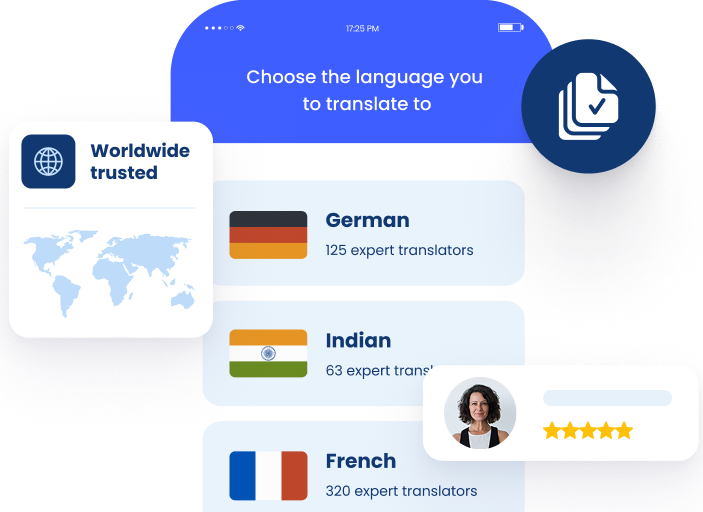Insurance Translation Services: Ensuring Accuracy in Claims, Policies, and Legal Compliance
According to projections by Allied Market Research, the global insurance market is expected to hit USD 28.5 trillion by 2032. This growth brings your company to linguistically diverse regions, creating an urgent need for precise multilingual communication.
The cost of language errors is high in such a high-stakes industry insurance. A mistranslated clause or an inaccurate claim statement can trigger multi-million-dollar settlements, regulatory penalties, or loss of trust. Fortunately, this can be avoided with professional translation.
Insurance translation services provide the precise rendering of policies, claims documents, underwriting reports, customer communications, and real-time interpreting needed to operate effectively across languages and jurisdictions. In this article, we explore what insurance translation entails and the risks of inaccuracy. We also outline best practices for selecting a provider that meets the industry’s legal, operational, and client service demands.

Types of Insurance Documents that Require Professional Translation
Every stage of the insurance process generates documents with legal and financial weight. Translating them requires subject-matter expertise and strict quality control to avoid disputes or compliance failures.
In practice, policy documents such as the Summary of Benefits and Coverage (SBC), Evidence of Coverage (EOC), and terms and conditions form binding contracts. A mistranslation can unintentionally alter coverage scope or create loopholes, exposing the insurer to liability.
Claims documents, including claim forms, accident reports, police statements, medical records, and Attending Physician Statements, are central to fair adjudication.
For example, an inaccurately translated medical record may cause an insurer to undervalue an injury, leading to delayed or denied payment. Certified insurance translation ensures all parties have the same understanding of facts and evidence.
Underwriting and risk assessment materials such as actuarial reports and reinsurance treaties involve technical and financial terminology. Misinterpretations here can distort risk calculations and misprice premiums, creating long-term financial exposure.
Customer-facing communications, think renewal letters to multilingual website content, need both linguistic accuracy and cultural adaptation. This ensures the intended meaning is clear and relevant to each audience, maintaining trust across markets.
Interpreting Services in the Insurance Industry
Interpreting complements written translation by enabling accurate, real-time exchanges in claims, investigations, and customer service. The right delivery method depends on the urgency, complexity, and setting.
On-site interpreting
On-site interpreters are essential in in-person interactions where context and non-verbal cues affect outcomes.
This includes fraud investigations, legal depositions, or policy negotiations. For example, a claims adjuster interviewing a non-English-speaking witness in a contested liability case relies on an interpreter to capture every detail and tone accurately.
Remote interpreting
Remote interpreting allows insurers to connect policyholders, claimants, and other stakeholders with qualified linguists without requiring physical presence.
This approach is particularly effective when urgent communication is needed across time zones or geographic distances. It ensures that language barriers do not delay claim reporting, policy discussions, or service inquiries.
By enabling rapid access to trained interpreters, you can maintain service continuity, protect accuracy in complex exchanges, and provide equitable support to all customers regardless of location.
Multilingual customer service and emergency interpreting support
Multilingual call centers enhance customer retention. Research shows consumers are 1.5 times more loyal to financial institutions that offer culturally relevant, multilingual service. During disasters such as hurricanes or floods, the ability to scale interpreting resources rapidly ensures urgent claims are processed without service breakdowns.
Why Accuracy is Non-negotiable in Insurance Document Translation
Inaccuracy in translation can result in financial loss, legal defeat, and reputational damage. These risks are demonstrated by real-world cases.
The Florida “intoxicado” case illustrates financial and medical consequences. A family used “intoxicado” to mean “poisoned.” It was mistranslated as “intoxicated,” delaying diagnosis of a brain hemorrhage. The patient became quadriplegic, leading to a USD 71 million malpractice settlement.
Lexical ambiguity also creates risk. In French, “franchise” differs from the English “deductible” in meaning, and in Spanish, “carro” can mean “car” or “cart” depending on region. Infosys estimates 10 to 25% of insurance records may be unreliable due to such linguistic nuances, which can lead to claim disputes and policy misinterpretations.
In the Duong vs. Salas’ case, a Vietnamese-speaking client signed an English-only waiver for uninsured motorist coverage. The court found the waiver invali
Best Practices for Choosing an Insurance Translation Service Provider

Selecting the right provider protects you against operational, financial, and compliance risks. The following practices will help ensure quality and reliability.
Selecting translators with insurance industry expertise
Choose providers whose linguists are native speakers with direct insurance sector experience. This includes familiarity with policy structures, claims terminology, and relevant regulations. Request anonymized work samples and professional credentials before committing.
Implementing rigorous quality assurance and review processes
An ISO 17100-certified provider follows a three-stage workflow: initial translation by a qualified linguist, review by an independent linguist, and final verification. This process builds accountability into every project and shifts part of the risk burden to the vendor.
Leveraging translation memory tools and terminology databases
Translation Memory (TM) stores previously approved translations for reuse, ensuring consistent phrasing across documents and reducing costs. Terminology databases maintain uniform translation of core insurance terms such as “premium” and “indemnity.”
Scriptis reports that using TM for recurring SBC documents allowed linguists to focus on new content, cutting turnaround times and lowering costs.
Ensuring confidentiality and secure document handling
Insurance materials often contain protected health information (PHI) and personally identifiable information (PII). Providers must comply with HIPAA in the United States and GDPR in the European Union, using encrypted file transfers, strict access controls, and binding confidentiality agreements.
Meeting deadlines with scalable translation solutions
Demand can spike during open enrollment or post-disaster claim surges. Providers with broad linguist networks and strong project management can maintain quality while meeting accelerated timelines.
Partner with a Specialized Insurance Translator

Language in insurance is a compliance instrument, a risk control tool, and a driver of customer trust. A single mistranslated word can cost far more than the investment in professional translation.
The Language Doctors deliver certified translation and interpreting tailored to the insurance sector, supported by ISO 17100 quality processes, HIPAA- and GDPR-compliant security, and linguists with proven industry expertise. Contact us today to safeguard the accuracy, compliance, and clarity of your insurance communications worldwide.


